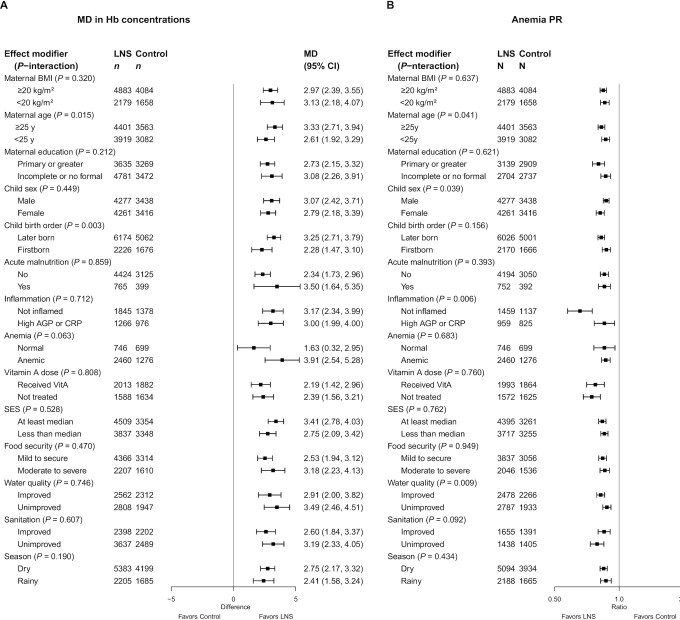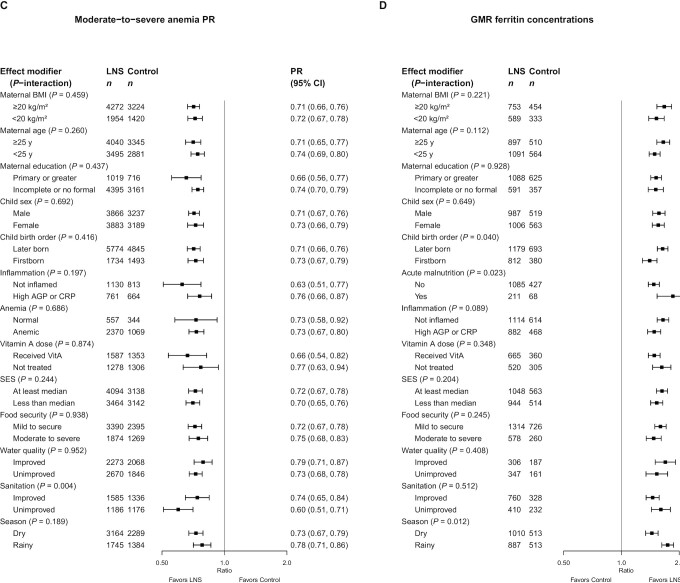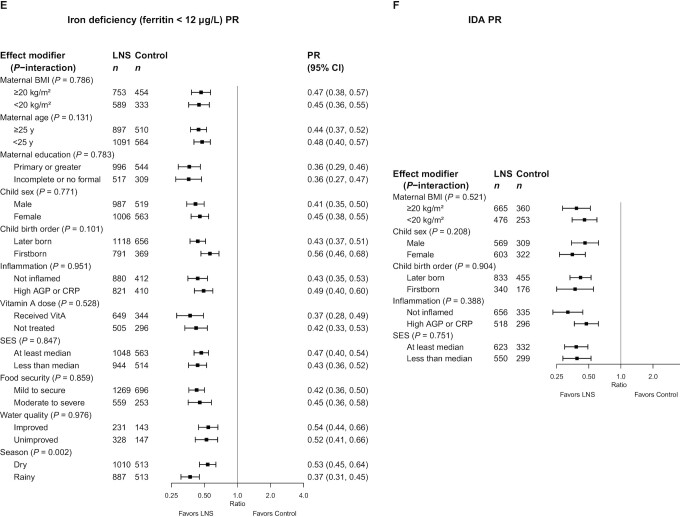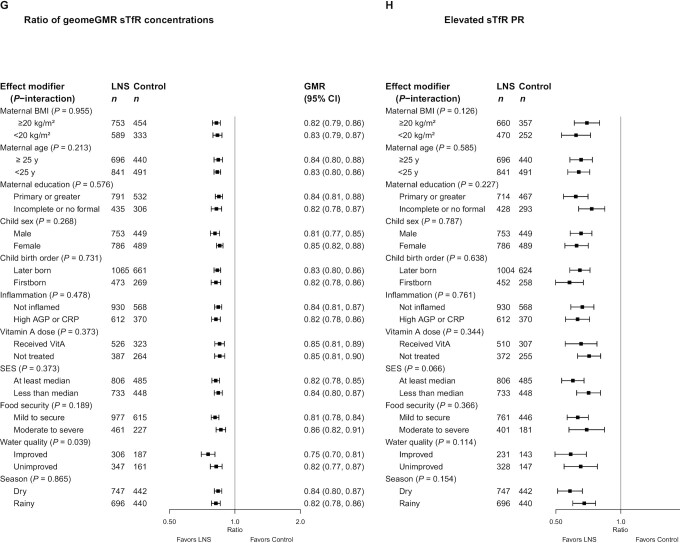FIGURE 6.
The effect of small-quantity LNSs provided to children 6–24 mo of age compared with a control on hemoglobin concentration (A), anemia prevalence (B), moderate-to-severe anemia prevalence (C), ferritin concentration (D), iron deficiency (E), IDA (F), sTfR concentration (G), and elevated sTfR (H), stratified by individual-level maternal, child, and household characteristics. Ferritin and sTfR concentrations were adjusted for inflammation (i.e., CRP and/or AGP concentrations, as available), using a regression correction approach adapted from the Biomarkers Reflecting Inflammation and Nutritional Determinants of Anemia (BRINDA) project (29). Individual study estimates for interaction effect were generated from log-binomial regression controlled for baseline measure when available and with clustered observations using robust SEs for cluster-randomized trials. Pooled subgroup estimates and statistical testing of the pooled interaction terms were generated using inverse-variance weighting fixed effects. For some biomarkers of micronutrient status, we were unable to generate pooled estimates for effect modification by certain potential individual-level effect modifiers owing to an insufficient number of comparisons. AGP, α-1-acid glycoprotein; CRP, C-reactive protein; GMR, ratio of geometric means; LNS, lipid-based nutrient supplement; MD, mean difference; P-interaction, P value for the interaction indicating the difference in effects of small-quantity lipid-based nutrient supplements between the 2 levels of the effect modifier; PR, prevalence ratio; SES, socioeconomic status; sTfR, soluble transferrin receptor.




